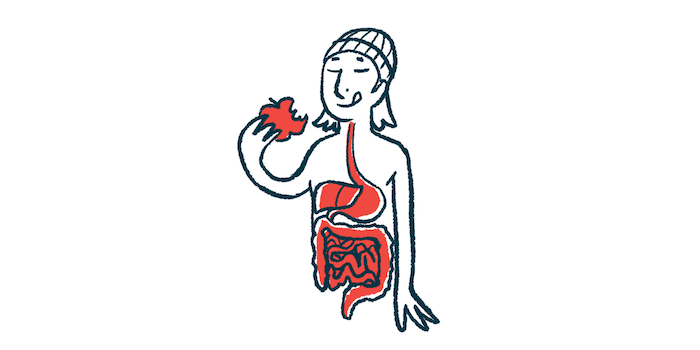Abnormal Eating Patterns Are Seen in Many Younger CF Patients
About 10% of adolescents and young adults are affected, a small study finds
Written by |

About 10% of adolescents and young adults with cystic fibrosis (CF) have abnormal eating patterns, according to a single-center study.
Results suggested that nutrition-focused subscales of the Cystic Fibrosis Questionnaire-Revised (CFQ-R), a tool commonly used for assessing health-related quality of life in CF, may help identify young patients at risk of eating disorders.
The study, “Eating disorders in adolescents and young adults with cystic fibrosis,” was published in the journal Pediatric Pulmonology.
While CF is most commonly associated with lung function impairment, most patients develop exocrine pancreatic insufficiency, a condition marked by deficient release of digestive enzymes from the pancreas. This affects nutrient absorption, contributing to an overall poor nutrition.
Due to their respiratory insufficiency, the energy requirement of people with CF is up to two times higher than in those without the condition. Thus, getting proper nutrition and achieving an adequate weight is an early concern for CF patients, and it may contribute to better outcomes.
Evidence suggests CF children and adolescents are at higher risks for body image concerns compared with healthy youth or those with other diseases, like diabetes.
“Given how integral nutrition and weight status are to the health of patients with CF, understanding the prevalence and impact of body image disturbance and eating disorders in this patient population is important,” the researchers wrote.
Eating disorders and surveys
To evaluate the prevalence of eating disorders among young CF patients, the scientists asked a group of CF patients to complete three surveys — the Eating Disorder Examination Questionnaire (EDE-Q), the Nine-Item Avoidant/Restrictive Food Intake Disorder Scale (NIAS, which also is an eating disorder assessment), and the health-related quality of life CFQ-R.
According to the team, both the EDE-Q and the NIAS have been validated in the general population, but have not in those with CF.
A score of 2.3 or higher in the EDE-Q was indicative of an eating disorder. In the case of the NIAS, the presence of avoidant/restrictive food intake disorder (ARFID) was indicated by a minimum score of 10 in the Picky Eating and Fear subscales or of nine in the Appetite subscale. ARFID, the researchers wrote, “is a unique diagnosis in that affected individuals have no evidence of disturbance in their body weight or shape.”
Regarding the CFQ-R, the team focused on body image, eating, and weight parameters. A higher score on the CFQ-R means better quality of life.
In total, 52 patients (33 females, 19 males; mean age 24 years) completed the surveys. Almost all (49 patients, 94.2%) had pancreatic insufficiency and 88.5% carried at least one copy of the F508del mutation, the most common CF-causing genetic alteration.
Relative to published data of the general population, CF patients had reduced concern for an eating disorder. Still, the team found a 9.6% prevalence of eating disorders based on the EDE-Q global score. According to the pre-established criteria for an ARFID in the NIAS, seven patients (13.5%) also were deemed positive.
In an analysis, the researchers identified factors with a statistically significant link to the risk of an eating disorder, as measured by the EDE-Q global and the NIAS total scores.
Risk factors linked with a higher EDE-Q global score included a lower CFQ-R eating score and a higher CFQ-R weight score. In the case of a higher NIAS total score, the factors were a lower CFQ-R eating subscale score and the presence of two copies of the F508del mutation.
In both cases, this indicates that a lower score in the CFQ-R eating subscale could help identify abnormal eating behaviors.
Overall, these findings suggest a “clinically significant number of participants screened positive for eating disorders,” the researchers wrote.
“Specific nutrition related subscales on the CFQ-R may help in identifying people with CF who are at risk for a variety of eating disorders. This screening tool, which is already widely used in the CF population, therefore, may offer providers insight into potentially at risk individuals,” they concluded.
Among the study’s limitations, the investigators mentioned its small sample size and the fact that patients were recruited from only one center.







